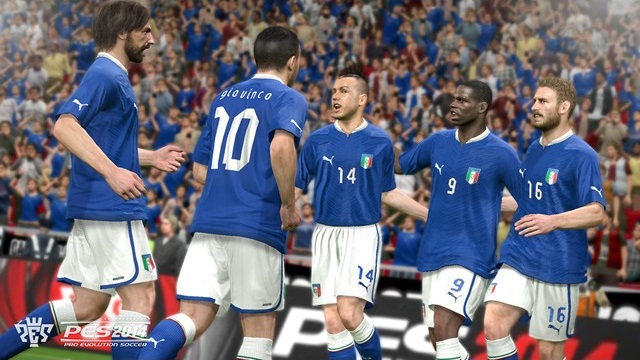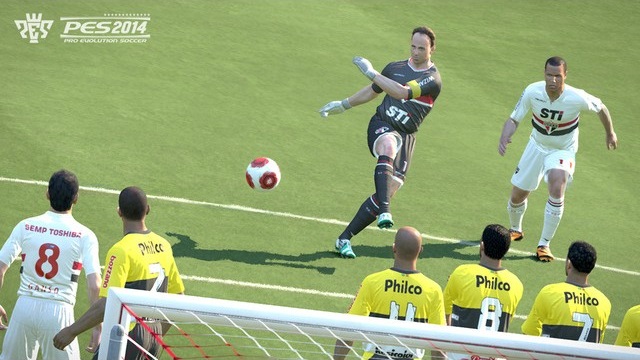Goooooal! Increíble!
For years, Pro Evolution Soccer has battled with the FIFA series in the race for the best fútbol simulation. To this point, both franchises have added and tweaked their ways to what we know now. Opinions vary on the yearly winner but what is clear is that they are two very different games.
To PES, it’s not just about beating out its counterpart, but about presenting a title that is as true to life as possible. On field, gameplay is better than ever. Using the highly touted Fox Engine, player interaction has begun taking on a life of its own. The engine allows for gritty, hard-nosed competition. When jostling and lobbing for position as well as for the ball, finding that level of physicality is important.
Exerting your presence is such an important factor on the pitch, and with the new Motion Animation Stability System (MASS), player collisions have a more realistic feel, as every little factor makes a difference when engaging and opponent. From speed, height, direction of attack, and size, each trait determines how effective every soccer player's movements are, in open spaces as well in close encounters.
Another key factor to realism is the new TrueBall Tech. The spiel that “the ball is the center of attention” is true to form, meaning that kicking around the ball feels more authentic. Before, animations would illustrate the ball as almost connected to a player’s foot or body. When an attacker would sprint, dribble, and then come to a complete stop, the ball would lie dead with him. Of course this isn’t the actual way a real soccer ball works. Now, if a player does not touch-control, the ball will continue to roll on its path. Kick trajectories and the way the ball spins also shine with a dash of beauty. However, there’s something about the power meter when passing and shooting that’s off. Passing in particular takes too long to load up and becomes frustrating when trying to quick one-touch pass.
Movement is responsive and finding placement of the pitch comes with ease. A.I. teammates are fairly intelligent and will attack in a uniform manner (mostly). If they don’t, you can manually direct the way you want them to go while you’re dribbling the ball. The smooth framerate helps keep gameplay fluid, though when it comes to celebrations and replay, it’s choppy at times. The action keeps up so it’s not a major problem.

The surrounding elements mask any rough patches that come along. Crowds are layered and 3D structured. But it goes beyond just the look; fans fully engage the environment. Just by cheering, home crowds can will their guys for a comeback. It is all in the heart, capturing the emotion and translating it to the field.
The simplicity of the game is well-accepted. Unlike FIFA, PES ’14 centers itself around the experience you get on the field, rather than showing off all its bells and whistles around it. There are three key points the development team wanted to focus on: authenticity, technical superiority, and passion—all of which shall only continue to get better with time, especially in the case of authenticity. And with new licensing agreements, with a high number stemming from South America, PES should one day be on par with or surpass FIFA.

Game modes are neatly uniform throughout selection screens and jumping right into one of their many tournament modes is done in a breeze. From AFC Champions league, to UEFA Europa league, as well as Football Life, you can take control of your favorite club and beat the world.
The progression over the years for Pro Evolution Soccer is evident. Just a few years ago this was an arcade game that only collected dust in the corner and watched as many a kid gingerly thumbed through selections around it. Not saying fútbol fans haven’t enjoyed it, as there’s surprisingly quite a following to the title, but it has just taken time for growth and solid improvement. ’14 seems to be the year we’ll look back and say, “Yup, that’s where it turned the corner. Man, I miss that DeLorean.”
-
Strong performance from Fox Engine
-
More licensing
-
...still not as many as FIFA
-
Frustrating one-touch passes
-
Laid out neatly, doesn't overkill on features







